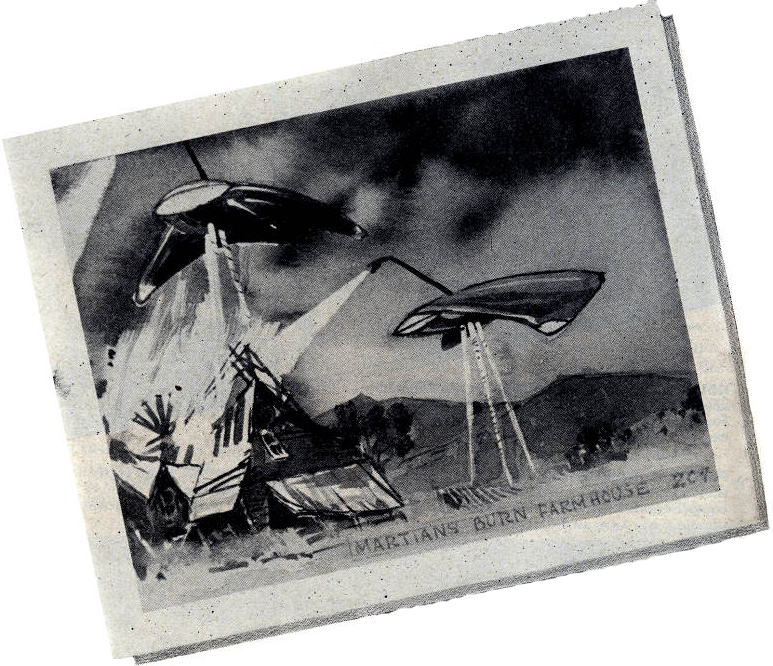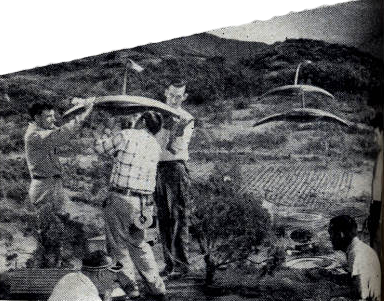Dans la Guerre des Mondes, des vaisseaux spatiaux à l'épreuve des bombes A were a headache. Cela demande de la technologie pour construire une soucoupe volante même qui vous y fasse croire.
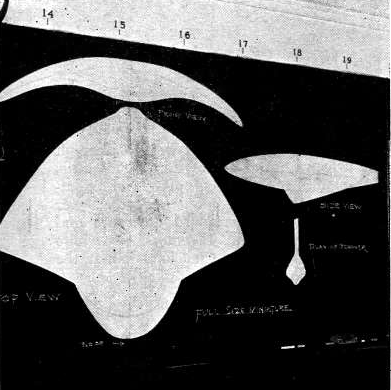
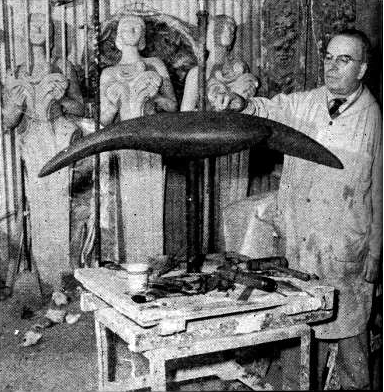
Comment construiriez-vous even a make-believe flying saucer ?
Ce fut le problème toughest confronting George Pal, le producteur de When Worlds Collide et Destination Moon, lorsqu'il set out recently de faire un film de la fameuse histoire de science-fiction de H. G. Well, La Guerre des Mondes.
You'll see the result on your local screen when his picture is released. Pal called his studio technicians together and told them to discard all thoughts of antiquated rocket ships. He wanted to set the style for space vehicles of the future. and, in line with Well's original novel, these Martian blitz machines had to look their deadly part.
That was where Art Director, Al Nozaki came in. Roughing in the first of the 1,006 sketches used to set the mood and action of the film, he crossed a flying wing with a flying saucer to produce the aerial devilfish that Pal demanded. A cobra-like death eye, flickering magnetic legs, and an atom-bomb-resistant envelope that spread itself over the space ship with the ease of a motor-operated convertible top, completed tentative specifications.
Then it was up to the model builders. Sculptors tooled the design in plaster, forming a pattern for the workers who produced the three 45-inch copper models used in the actual filming. Windows, to fit nose, wings and wing tips were cast in plastic. Into the 31-pound miniatures went fifteen hundred dollars' worth of special neon and incandescent lighting. Two motors were used to control the cobra head. Magnesium, burned on window screening, provided the fires caused by the saucers as they flew.
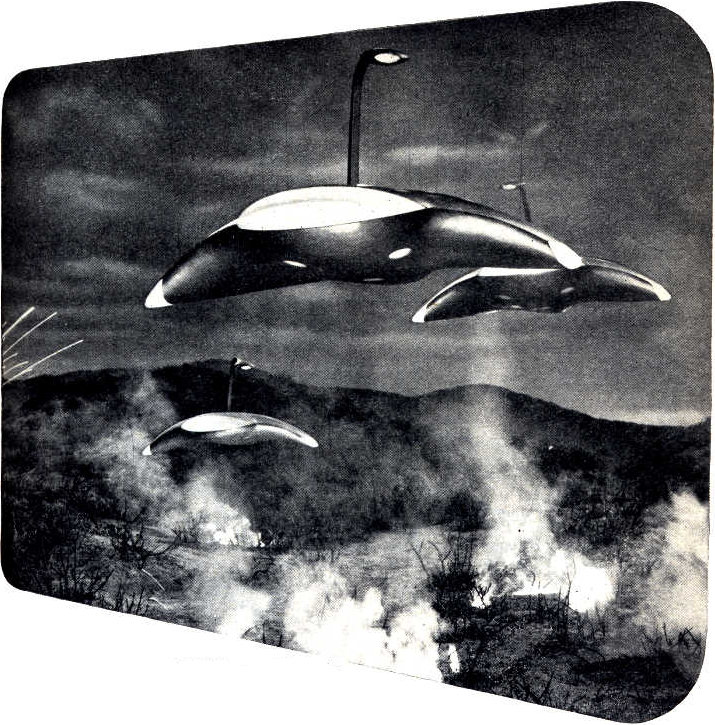
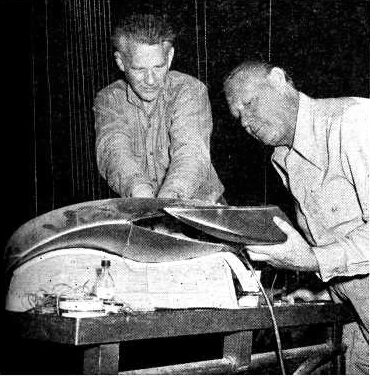
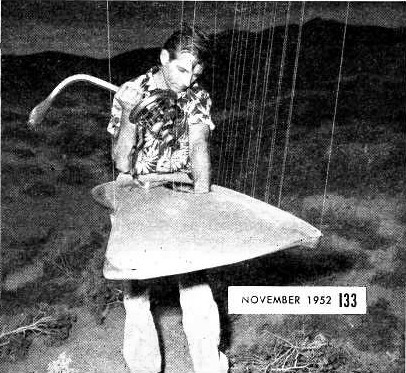
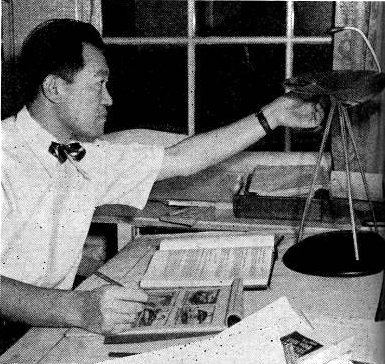
The actual flying of the saucers followed time-tested overhead-wire technique. But the bombproof hood was a puzzler until a series of animated overlay drawings was developped.
Using double exposure, these were superimposed, one at a time, on the corresponding photo frames. The same blending of photography and drawings made possible breath-taking glimpes of flying-saucer victims, military equipment and whole cities being reduced to ashes under the scorching eyes of the Martian Juggernaut.
